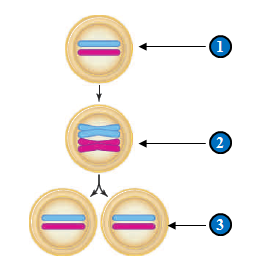Which of the following factors would make eradication of a disease harder?
A) easily identifiable
B) treatable or preventable
C) does not cause latent infections
D) longer incubation period
E) only humans transmit and catch
Answer: D
You might also like to view...
In the near future, the human population is predicted to involve
A. a worldwide decrease in population growth due to limited resources. B. a continuation of human population growth at the same pace as in the previous century. C. a decrease in growth in most, but not all, more-developed countries and continued growth in most less-developed countries. D. an increase in population growth in all countries in the world.

A. A pair of homologous chromosomes in G1 B. Two chromosomes in anaphase C. A pair of duplicated homologous chromosomes after G1 D. The entire genome of the organism E. A chromosome in telophase
You are a forensic technician working on a DNA sample obtained from a crime scene. Your job is to compare the unknown DNA sample with known DNA samples collected from five different suspects. Preliminary analysis using only a few DNA markers revealed that the unknown sample could possibly match two of the suspects. After consulting the case file, you find out that these two suspects are brothers (but not twins). You realize that you will have to do a more detailed analysis on the samples so that you can distinguish between the brothers and determine which brothers' DNA matches the unknown sample.Which of the following will help you distinguish between the two final suspects?
A. markers on the Y chromosome B. linkage data C. human genome map D. single nucleotide polymorphisms (SNPs)
A small population of a species invades an island where the species is not found. If the population becomes a new species, this is an example of:
a. the dumbbell model of allopatric speciation. b. the peripheral isolate mode of allopatric speciation. c. sympatric speciation. d. parapatric speciation.